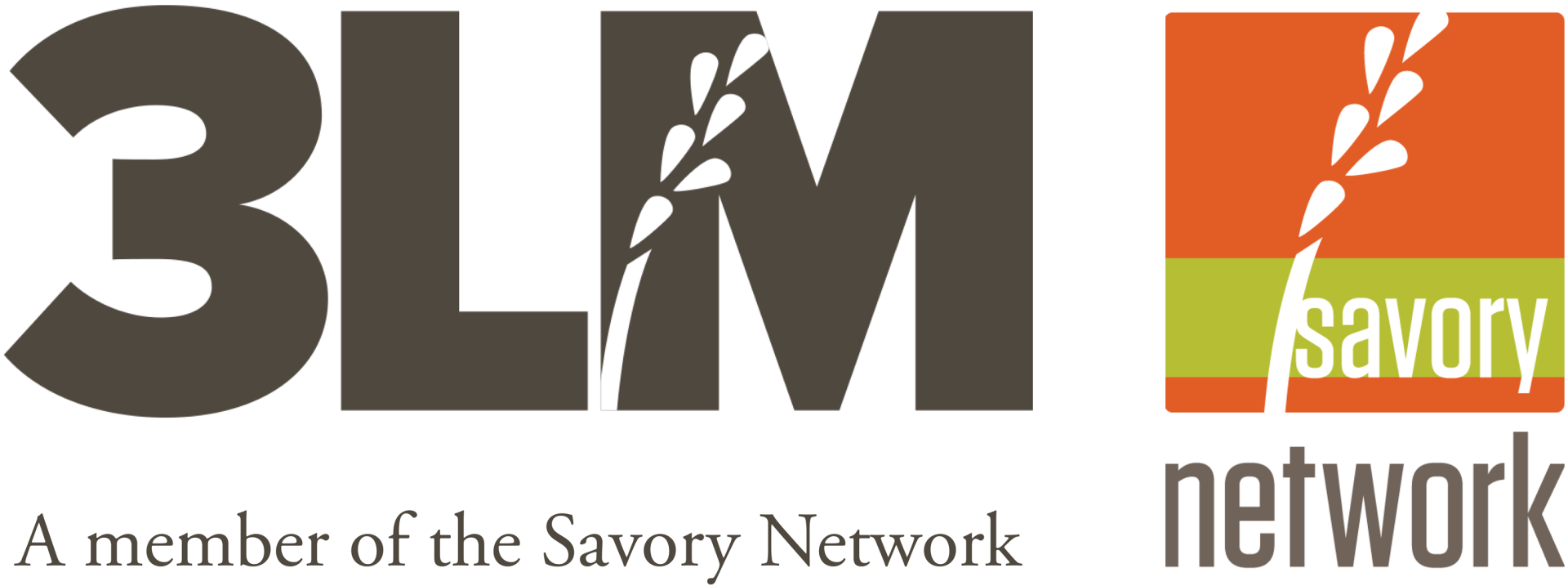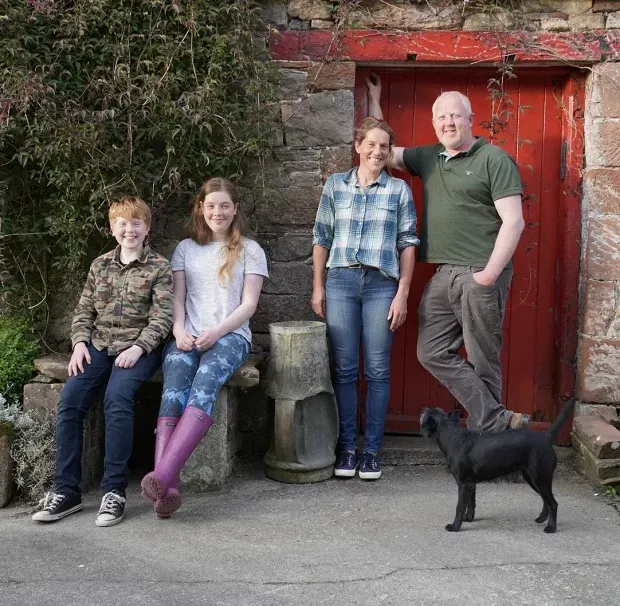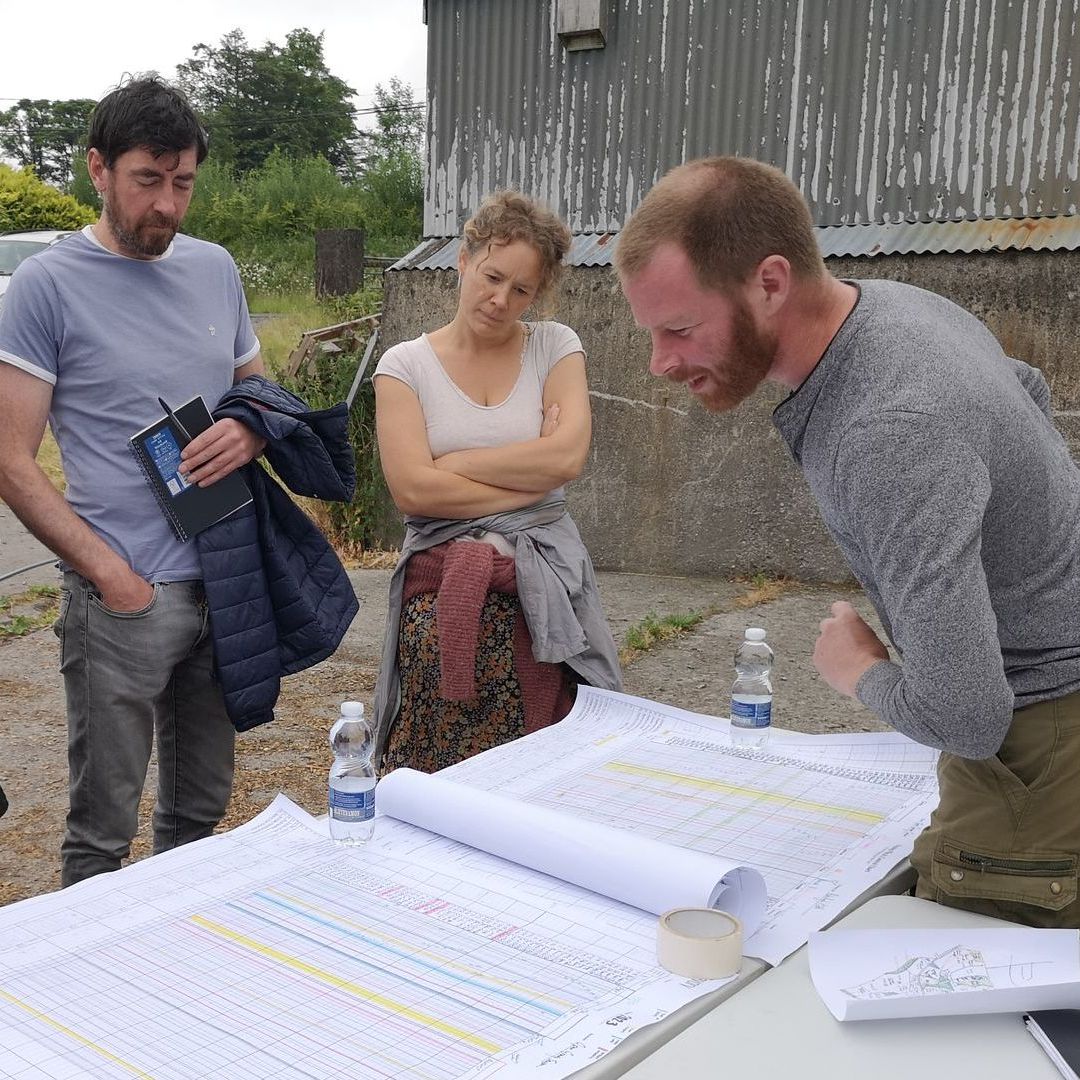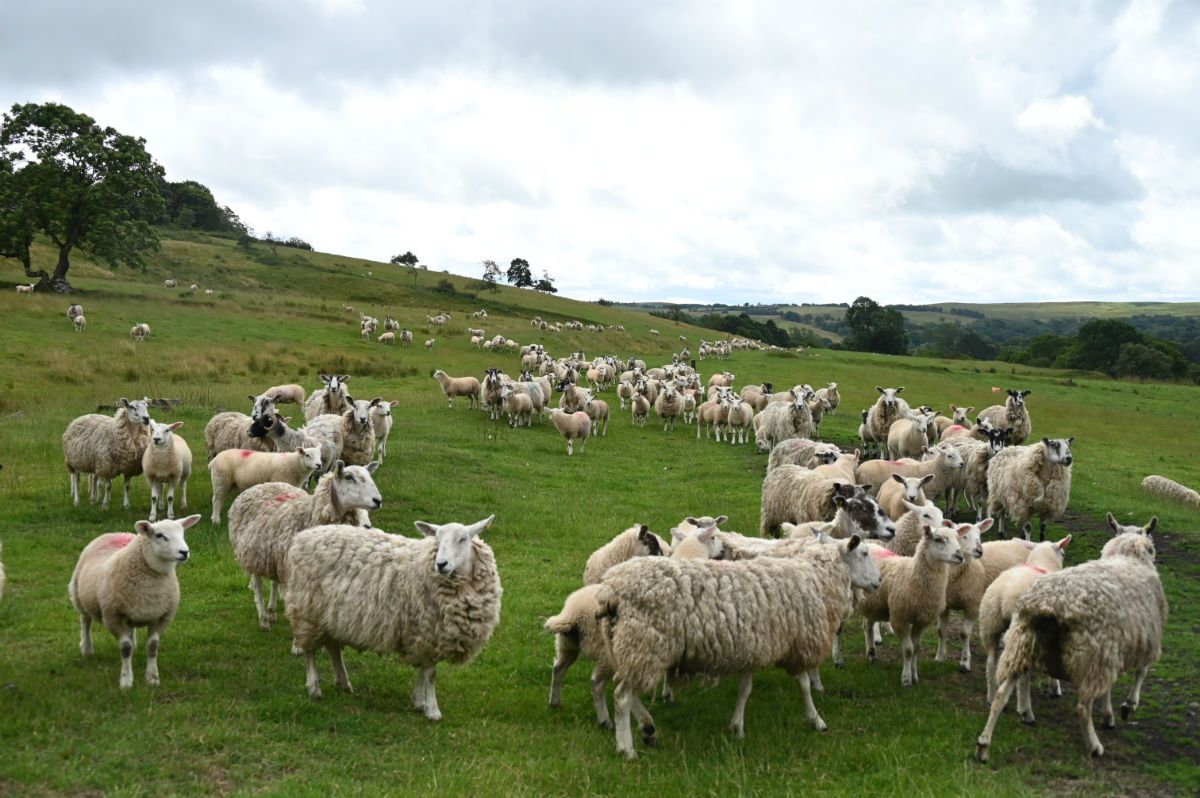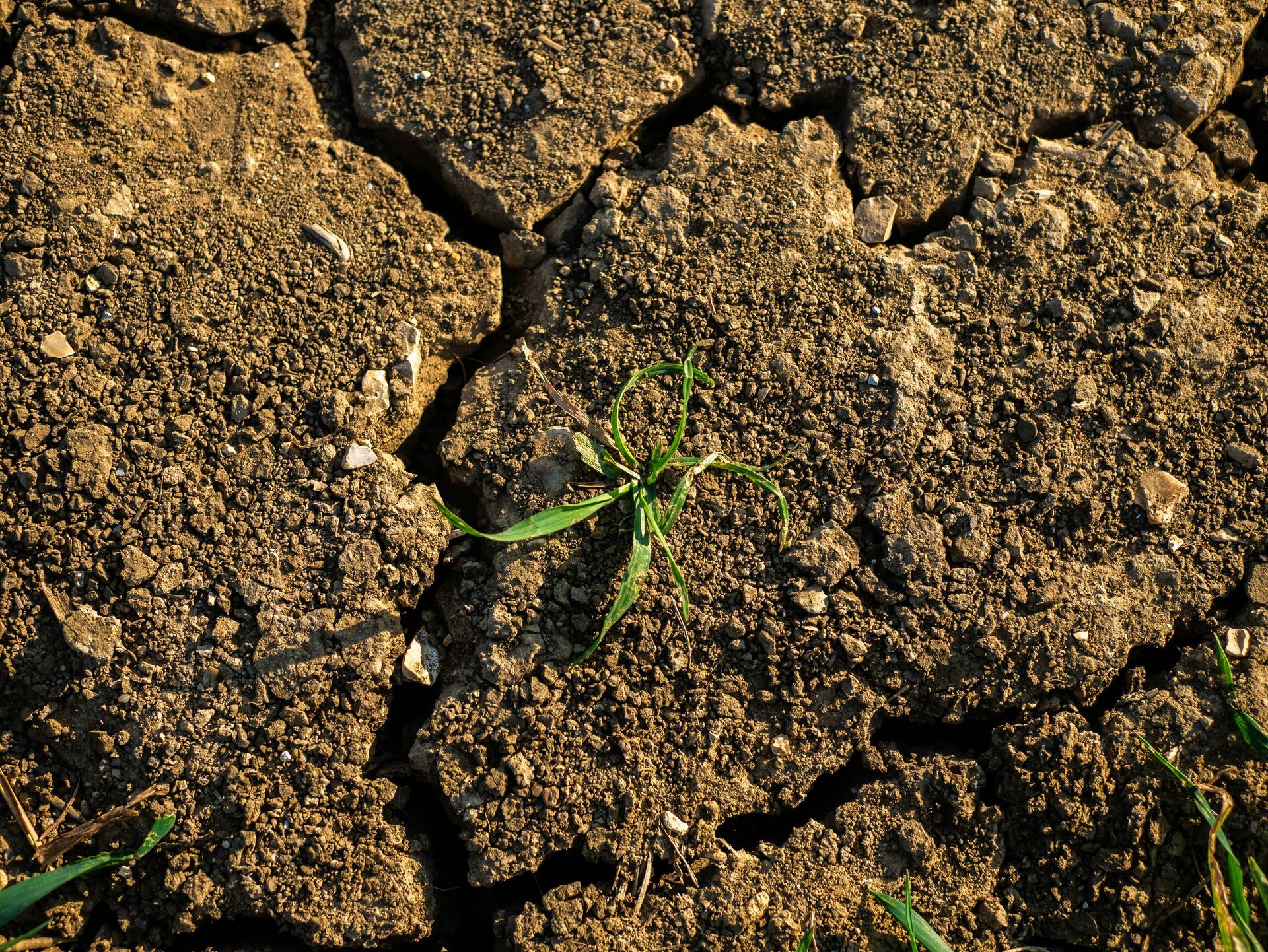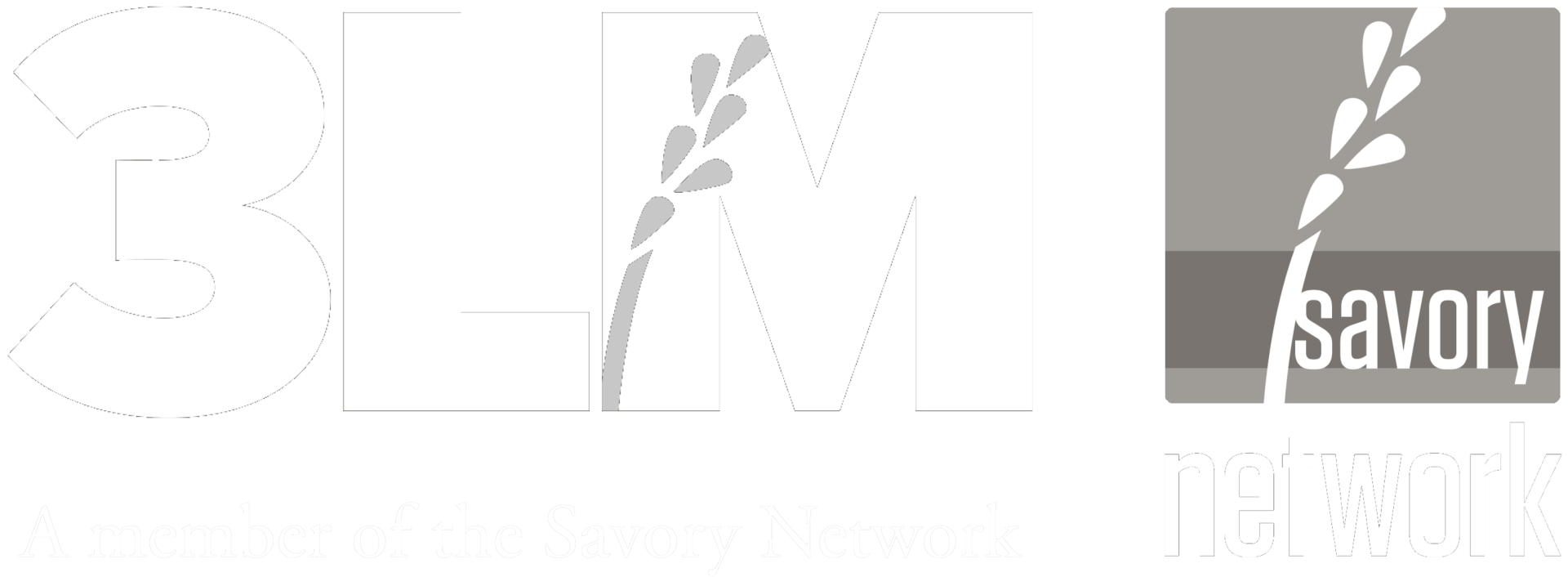Holistic Management Fundamentals - Energy Flow
The Sun’s Gift: Energy Flow and Holistic Management in Ecosystems
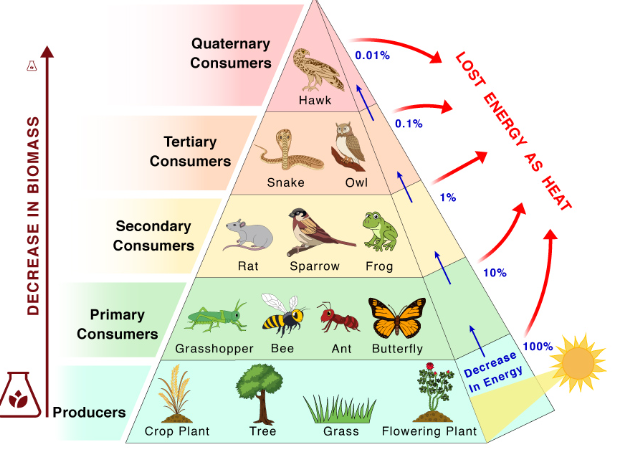
Figure above shows sunlight providing the initial energy then a 90% reduction in energy through each trophic level as energy is lost as heat.
In the study of Holistic Management on our Fundamentals Course we introduce the 4 ecosystem processes, the water cycle, the mineral cycle, energy flow and community dynamics. In this article we look into energy flow in more detail.
The Sun provides life
Every living system on Earth is powered by the sun. Without it, the intricate web of life would collapse, as all biological processes ultimately trace their energy back to this radiant source. Holistic Management recognises the flow of energy through ecosystems as one of the core processes that sustain life, but energy does not remain static. It moves, transforms, and dissipates, influencing the overall health and productivity of the land.
From Sunlight to Life: Capturing Solar Energy
The energy journey begins when plants absorb sunlight through photosynthesis, converting it into chemical energy in the form of carbohydrates. This is the first and most crucial step in energy flow because it determines how much energy enters the ecosystem. The more sunlight a landscape captures and converts into plant growth, the more energy is available for all other life forms.
But this process is not uniform. Bare ground and degraded landscapes waste solar energy because without plant cover, incoming sunlight is reflected or absorbed as heat rather than being transformed into biological productivity. Holistic Management aims to maximise photosynthesis through practices like planned grazing, biodiversity restoration, and soil regeneration, ensuring that more solar energy is put to work rather than lost.
Energy Flow and the Trophic Pyramid: The Inevitable Loss
Once energy enters the system, it begins to move up the trophic levels—from plants to herbivores, from herbivores to carnivores, and finally to decomposers. But at each step, energy is lost in the form of heat due to metabolic processes.
For instance:
A cow grazing on grass only converts a fraction of the plant’s stored energy into body mass. The rest is used in metabolic processes or lost as heat.
A wolf consuming the cow gets even less of the original solar energy, as much of it was already dissipated along the way.
At each level, only about 10% of the energy is passed on, limiting how many organisms can be supported.
This is why there are far fewer wolves than cows and far fewer cows than plants—energy constraints limit how many organisms can be sustained at each level.
Holistic Context: Decision-Making for Energy Management
A key principle of Holistic Management is the Holistic Context, a framework that helps individuals and communities make decisions that align with their environmental, social, and economic goals. When managing energy flow, decisions should be made with the long-term health of the land and the people who depend on it in mind.
In practice, this means:
Prioritising healthy plant cover to enhance solar energy capture and reduce energy loss.
Planning livestock movements to mimic natural grazing patterns, encouraging regenerative growth and improving soil health.
Assessing land use through multiple lenses—not just immediate productivity but also sustainability, resilience, and ecological integrity.
Encouraging biodiversity to create more energy pathways, ensuring a balanced and thriving ecosystem.
Minimising waste by reintegrating nutrients into the system through composting, rotational grazing, and maintaining decomposer populations.
The Holistic Context ensures that decisions are not made in isolation but are aligned with the broader ecological and social systems. It helps land stewards determine whether their actions are moving towards or away from long-term sustainability and resilience.
Regenerating Energy Flow in Ecosystems
Holistic Management acknowledges that energy must be cycled efficiently to create more productive and resilient landscapes. Key principles include:
Maximising photosynthesis by keeping land covered with green, growing plants.
Using herbivores strategically to stimulate plant growth and soil health rather than degrade it.
Enhancing biodiversity to create more energy pathways within the ecosystem.
Preventing bare ground to reduce wasted solar energy and keep energy cycling effectively.
Aligning management decisions with the Holistic Context to ensure long-term ecological and economic success.
Aligning with Nature’s Energy Flow
The sun’s energy fuels everything we see around us, yet how effectively it is harnessed and cycled determines the productivity and health of ecosystems. Understanding this balance allows us to manage landscapes more effectively, ensuring that the maximum amount of solar energy is harnessed, cycled, and transformed into abundance.
Holistic Management is not just about land—it is about participating in the grand energy cycle, working with nature’s patterns rather than against them. When we align our actions with these principles and ground them in a clear Holistic Context, we contribute to the regeneration of ecosystems, communities, and even the deeper intelligence of life itself.


